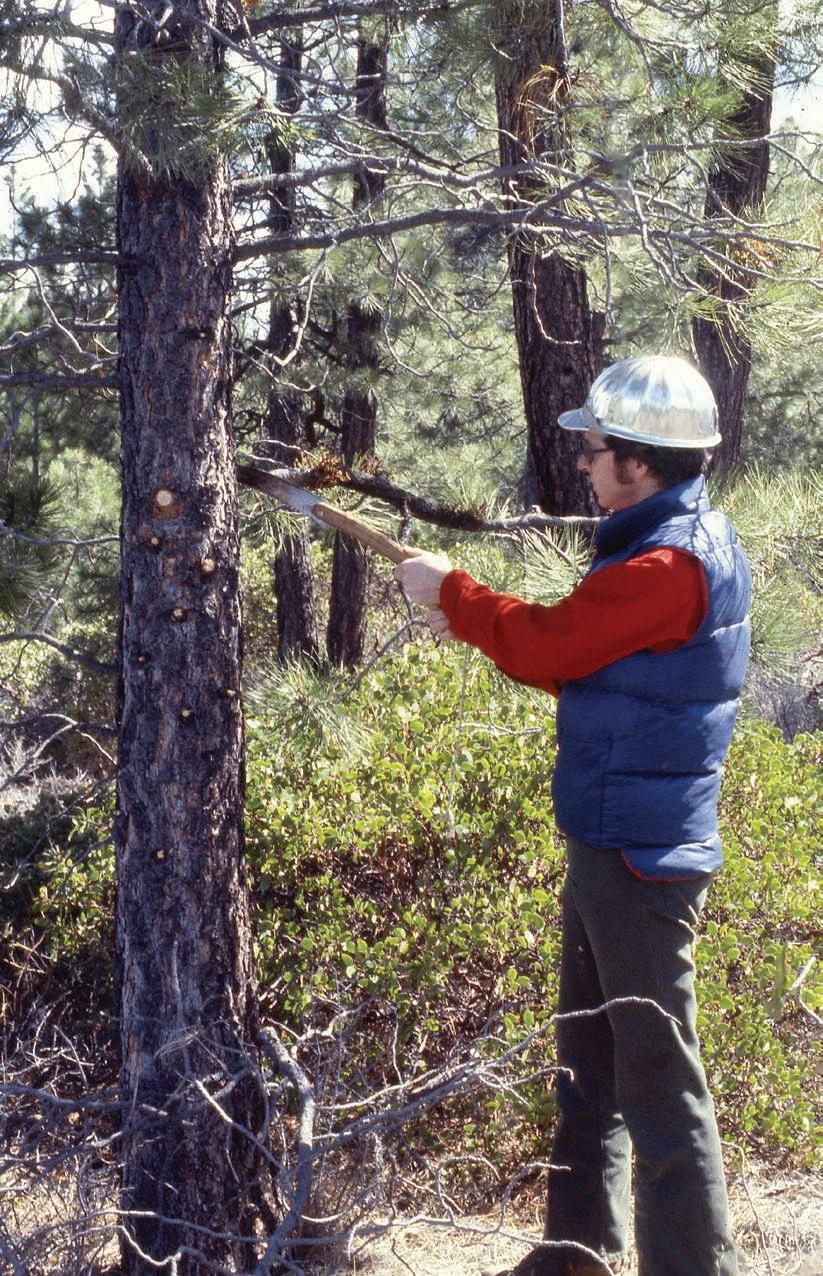
4 minute read
Newsmaker
Forest diversity lowers risk
Diversity, whether in a diet, finance, farming or income, can be an ideal means to mitigate risk. Scion researcher Thales West’s work has found the same principle applies to forestry and can help lower risks in an industry constantly juggling with the uncertainty of harvest values many years in the future. He spoke to Richard Rennie.
DATA from field work and research in Ashley Forest, Canterbury, has provided researchers with some invaluable inputs to try and determine whether the expense of pruning, or not, is worth considering as foresters respond to climate change’s impact on forest production.
Scion researchers Thales West and Serajis Salekin combined forest growth data from Ashley Forest with a global timber price model to analyse production outcomes under climate change for forests growing from 2050 to 2090.
Their work has implications for how future forest rotations may be planted and managed, particularly as New Zealand looks beyond the immediate benefits exotic plantings bring for carbon reduction, to longer-term species both exotic and native.
The researchers inputted several different growing scenarios and market conditions, including such combinations as low forest production under high market return conditions, and vice versa.
“We ended up with nine different scenarios, with a risk factor for each and those scenarios were tested across four climate change scenarios, based on what the International Panel on Climate Change (IPCC) has presented,” West said.
These included most pessimistic, most optimistic and “most likely” outcomes.
West acknowledges that answering climate change impacts upon NZ’s overall forest estate is tough.
“It really depends upon where you are in NZ,” he said.
“The climate change impacts come from global models, which are then downscaled for NZ, it adds a layer of uncertainty to it.”
But prospects under climate change for NZ are not always completely negative – in some areas snow precipitation is replaced by rainfall, in other areas sub-zero temperatures become less common, making tree planting possible.
“But often this does usually mean average temperatures will be higher and warmer periods of the year will be hotter. Changes in temperature may also encourage more diseases not seen before that could impact forest productivity,” he said.
On balance, West says climate change is more likely than not to have a negative effect upon forest production.
A key practical recommendation to fall from the work is for foresters to reconsider pruning regimes.
After years of the premium between pruned and unpruned logs closing and foresters stopping pruning. But the work found there was a trend for the price gap to open up, making pruning more profitable again.
The researchers had originally wanted to compare pine with other species for performance over time under the climate and market scenarios.
“But the biggest challenge was we were not able to find data for all species to compare them, leaving only pine for our focus,” he said.
However, they are confident they now have a framework that can be adopted to other species.
“I suspect if we had the data it would tell us diversification is the way to go, but the question will be how much – is it 80% pine and 20% natives? We do not know yet,” he said.
This work will be particularly relevant in coming years as foresters and climate change policymakers debate the need to include natives into longer-term sequestration capacity, while still generating an acceptable level of carbon credits in the shorterterm.
The Climate Change Commission (CCC) is pushing for 20,000ha a year of new native plantings alongside 25,000ha a year of exotics, but foresters are urging policymakers to consider the spectrum of forest diversity.
This would include not only longer sequestering natives, but long-lived exotics like Douglas Fir or cedars that also manage to sequester carbon earlier than their native counterparts.
The Scion researchers are constructing a database accepting data from as many different species as possible from growers.
“We are very keen to talk with forest owners who are happy to provide data and participate in putting together a database that will provide some reliable and precise results,” he said.
REBOUND: Pruning will become profitable again as the premium for pruned logs opens up. OUTLOOK: Thales West says predicting market outcomes and climate change in combination for the long-term business of forestry is a tough venture.

Thales West Scion
Supporting farmers for over 40 years

Farm Focus is easy-to-use time saving, financial management software that provides a big picture view of farm performance and profitability for you and your team. With Farm Focus you’ll work smarter not harder, having the confidence to make the right calls to grow your business, so you can do more of what you like.

Scan to learn more







